At the Studio, the toughest problems we face are not only making products work but making them work well and look good! A common problem we see customers struggling with is deciding on their product’s aesthetics even if we provide several options. If you’re bringing an invention to life, deciding on its general design is a tougher task than it may seem. Oftentimes, we will place creative planning on a client’s quote knowing that some customers have little to no idea what their product should look like or how it might function.
In this post, I would like to explore brainstorming and what we use for our design cues. For the inventors out there, effective brainstorming and idea generation can help make a better product and save money on consulting services. Though we thoroughly enjoy the chance to be imaginative at BES, it is always faster if our customer has laid the creative groundwork.
Two RULES of Group Brainstorming
For coming up with original ideas and designs, there are two rules. The first rule: no bad ideas. No idea is wrong (though it may be silly). Sure, “make it look like a butterfly!” doesn’t often make a ton of sense but someone else might be able to riff off that idea. Perhaps thin and delicate looking does provide the right feel! The second important rule: there are never enough ideas. It’s much easier to cross-off parts of a list than it is to generate novel and possibly awesome concepts. To that end, you can never have enough minds generating ideas. This is one reason BES engineers enjoy a very open workspace—to help share and breed creativity.
Take a look outside
Alright, so have your invention—let’s say we already know how it fundamentally works, to keep things simple. What should it look like? If you’re designing a remote control insect, then, yes, perhaps it should look like a butterfly. Though not often appropriate, let’s start there, with biomimicry. For millions of years, nature has been making and evolving “products” that perfectly fit their environment. Don’t be shy about looking outside for inspiration. Even something as simple as a plant can be perfect inspiration, especially if you’re designing interior lighting.
Take a look inside
This might sound simple, but take a look around your house or office. Find products that you already like and use those as guides to what your own product should look like. Better yet, use your possible competition! If a competing product tends towards smooth and curvy, you should consider boxy, techy, and geometric. Not only might this look new and novel, but it sets you apart from what’s already on the market. Forewarning: if you’re designing something to be worn, you should probably stick with the smooth and curvy. If you have trouble finding inspiration where you live and work, try a change of scenery. Try a fancy furniture store, the gym, an amusement park, or even a museum—an art museum.
Even the artistic geniuses trained by learning from other artists
Art is a great source of inspiration for product design. Often I will ask our clients to browse modern art to find a style they might like. Modern art or architecture often doesn’t look like anything you would find in the natural world. This makes it a great source of pure style. Cubism has been ported to furniture for years now; you’ve seen the upscale boxy couches and square ottomans. Mondrian’s work with black lines and primary colors has provided the inspiration for the design of everything from bicycles to refrigerators.
Other forms of art, particularly those with a 3-dimensional medium can provide even better cues to answer “how do we build this?” I routinely draw on my experience with origami folding to help design semi-complicated sheet metal parts instead of machining blocks of metal or getting injection-molds made. Actually, plenty of engineers do this—I see a news article every couple of years about how someone is using origami to make production more efficient or to better fold a solar sail. Modern sculpture, particularly pieces that play with our visual sense of equilibrium, can provide us with better means of playing with that sense of balance or imbalance in our own designs.
.svg)






